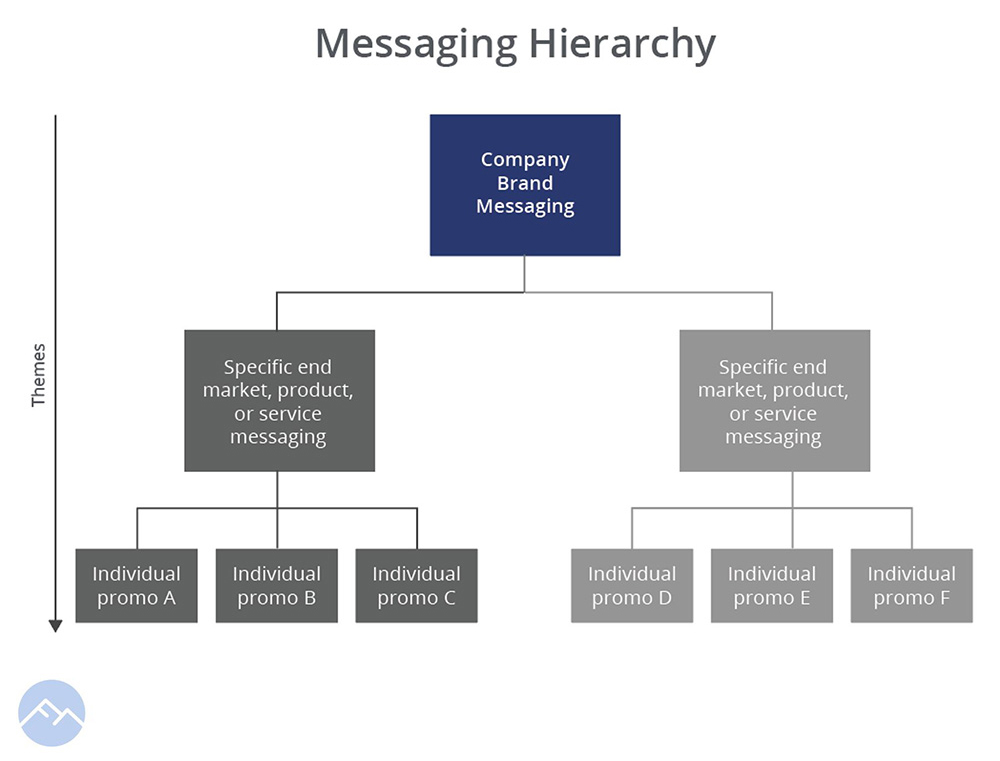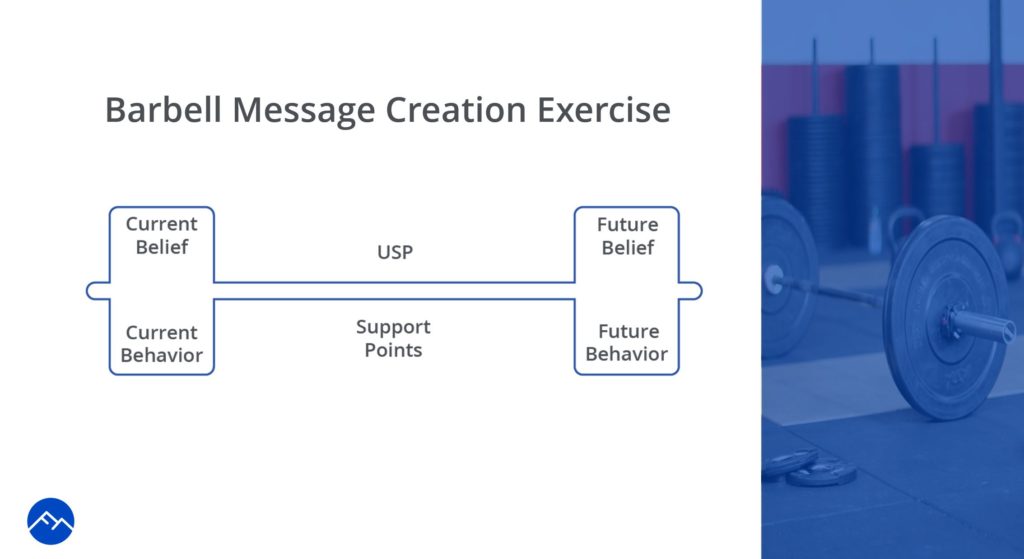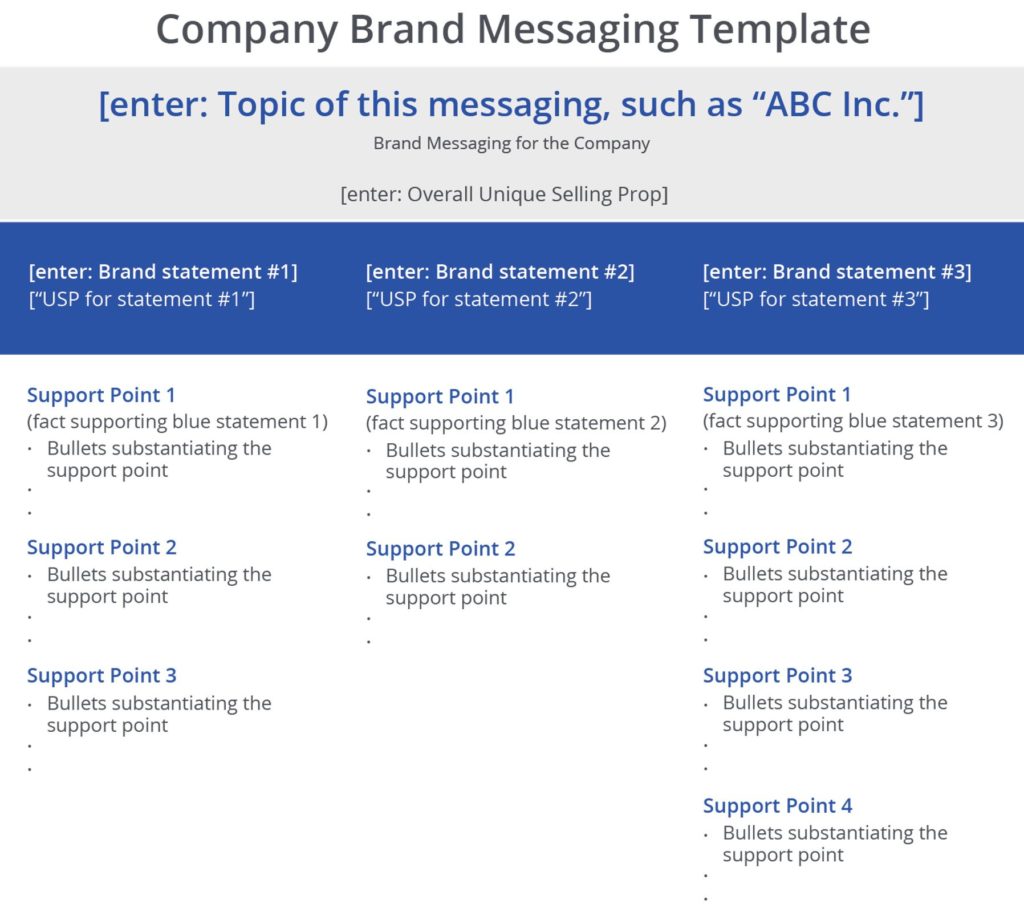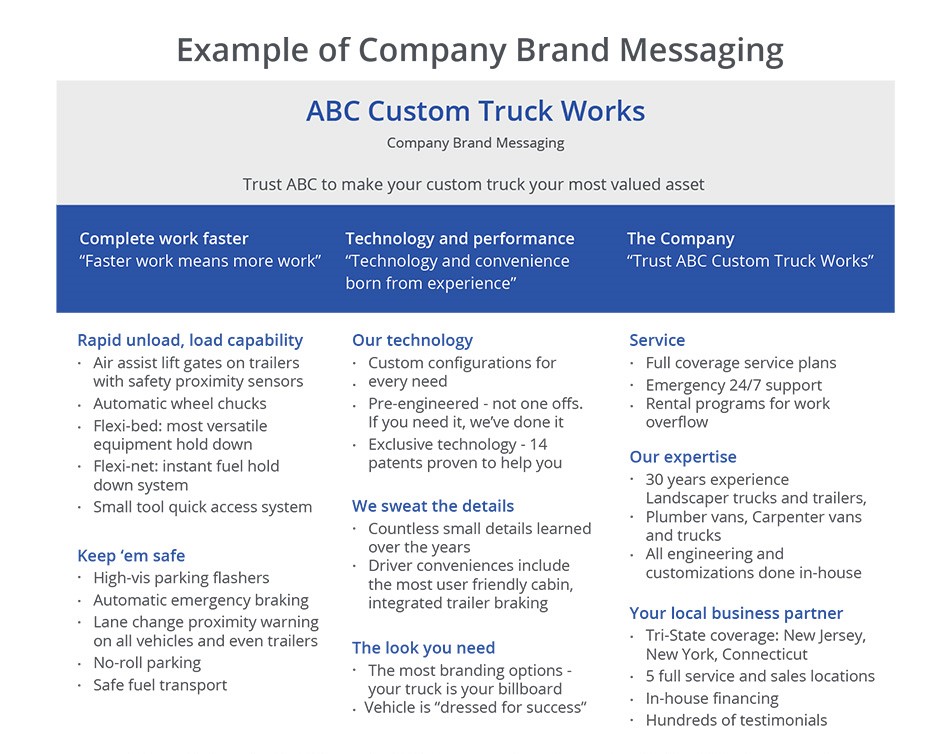You are creating your brand every day, whether you intend to or not. Every piece of information seen in the marketplace contributes to establishing or furthering your brand. To make sure you are sending the right signals to the marketplace, you need to tightly control your brand, and that starts with managing your messaging.
Marketing messages are themes and ideas that are ingredients to be used when creating specific customer facing content. Messaging delivers information and feelings to the marketplace, reflects and builds your brand, and even helps make work meaningful to your employees.
Traditional thinking holds that that your overriding company brand message should be so clear that you can write it down on a single piece of paper. I completely agree. The ability to deliver clear, consistent messaging is vital to the health of your commercial engine – your system for obtaining leads, selling, and serving the customer. And if you can’t write your company brand messaging down, then it is unlikely you are delivering a consistent brand message to the marketplace.
The Power of Blue Statements
Messaging has a hierarchy that flows down from one level to the next, each level below will take some elements from the level above. This hierarchy starts with the company brand messages, what I call Blue Statements – a name simply intended to make these high-level messages memorable and special. All other messaging, be it for a product brochure, website page, or small email promotion, cascades from these Blue Statements.

Blue Statements reflect your company culture, strategy, and brand at a high level. These statements should be concise, honest, and memorable. Ideally, you should have three Blue Statements. Any more and the messages are hard to remember. Any less and you may not be able to get your full message across.
I recommend using some type of message creation tool, such as the Barbell Message Creation Exercise™. The goal of a message creation tool such as the Barbell is to move your audience from their current position to your desired position (left to right in the image below).

Using the Barbell, you will create three company brand Blue Statements, each supported by two to five support points. Barbell and Blue Statements templates are found here.

As you can see from the template image above, Blue Statements cover three topics that reflect your company’s purpose, offering, and attributes, and each statement is backed by support points.
Creating Your Blue Statements
There are three steps to creating your Blue Statements. I provide an example at the end of this post.
- Preparation: Create a team and provide them with relevant information to review
- Pick 3: Select three topics for your company brand messaging
- Create messaging: Use the Barbell message creation exercise three times
Preparation
Create a cross functional team. Blue statements are high-level, and if you hope for adoption across your company make sure you include managers from marketing, sales, service, product management, and senior leaders. If the senior person in your company, such as a CEO or owner, is not available to participate, make sure to gather their input and review results with him or her along the way. Without buy-in at every level of the organization (including the top), adoption of your messaging is at risk.
Gather relevant content for review by your cross functional team. Share the company vision and mission statements, customer needs, marketing collateral, competitive messaging, and past messaging with the team. Review the company’s business strategy.
Pick Three Blue Statement topics.
I have found that every company can break down their company brand messaging into three categories. Three are enough to encompass a company position while being easily remembered and referenced. It can be difficult to boil down to only three, but enforcing this discipline ensures you stay focused enough to build up brand equity in your marketplace.
Manufacturing companies often choose three out of these ideas: company credibility, technology, leadership, service, promise of a bright future, offerings, performance/productivity, and ROI.
Again, review your three topics with the senior leaders to ensure you’re in sync with your company strategy or all your efforts to create effective messaging will be in vain.
Conduct the Barbell three times
Now, conduct the Barbell exercise once for each of the three Blue Statements. Place your results in the a single 3-column piece of paper, such as the template shown above.
Using the Blue Statements
After going through the Barbell exercise three times, you will have a powerful set of company brand messages. Use these Blue Statements for two purposes. First, these company brand messages are used to create various types of high level content reflecting your company, such as a corporate brochure or video, website navigation topics, or an annual report. Second, the themes from these Blue Statements are to be found in messaging in the next two tiers as shown in the hierarchy image above.
The wording created during the Barbell Exercise should not be used verbatim. The Blue Statement document is a list of core themes, not a library of tag lines. Print out your Blue Statements, and make them widely available to anyone who is creating marketing content, sales tools, or sales training material.
Themes cascade down. You should use a message creation tool such as the Barbell when you are creating messaging for the 2nd tier (end market or product related such as catalogs, end market related pages on your website, or trade shows) or third tier (specific promotion related such as email campaigns, speaking engagements, advertisements, or direct mail campaigns). Each time you use the Barbell to create messaging of a lower tier, some messages from the upper tiers must be incorporated to some degree.
Blue Statement Creation Example
Here is an example of a completed set of Blue Statements for a fictitious company called ABC Custom Truck Works, maker of custom pickups and vans for trades such as landscapers, carpenters, and electricians. The first Blue Statement involves improving the business of the customer, the second involves the technology and capability of ABC, and the third focuses on ABC and why the target audience should trust a truck they build.

Creating strong messaging is critical to developing a memorable and compelling brand. Creating a clear set of company brand messages – your Blue Statements – is an effective way to reach that goal.
chip
Chip’s email: cburnham@fairmontconcepts.com
Latest posts by Chip Burnham (see all)
- Value Pricing Retains Both Customers and Profits - November 14, 2018
- Voice of the Customer – Needs Research - October 17, 2018
